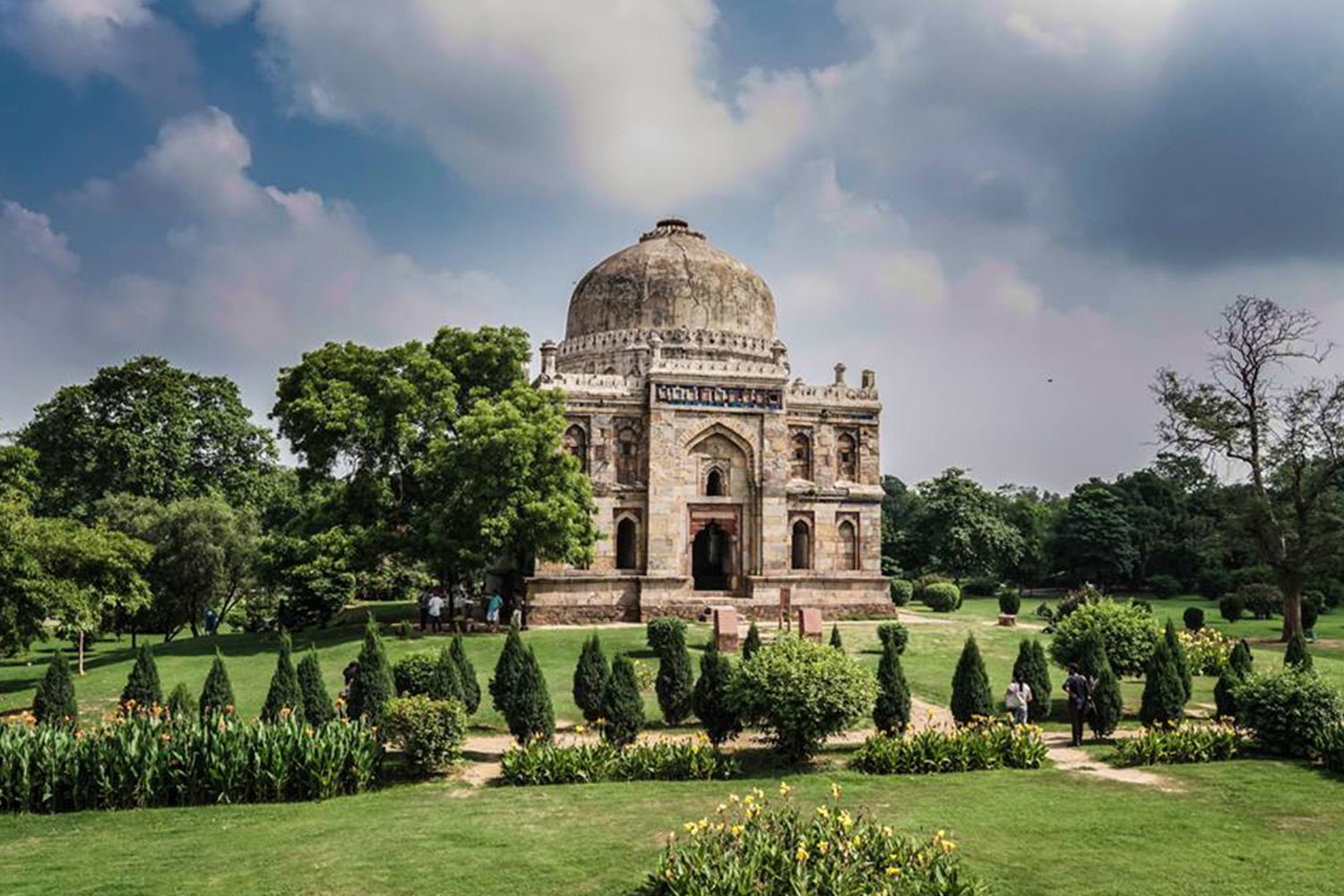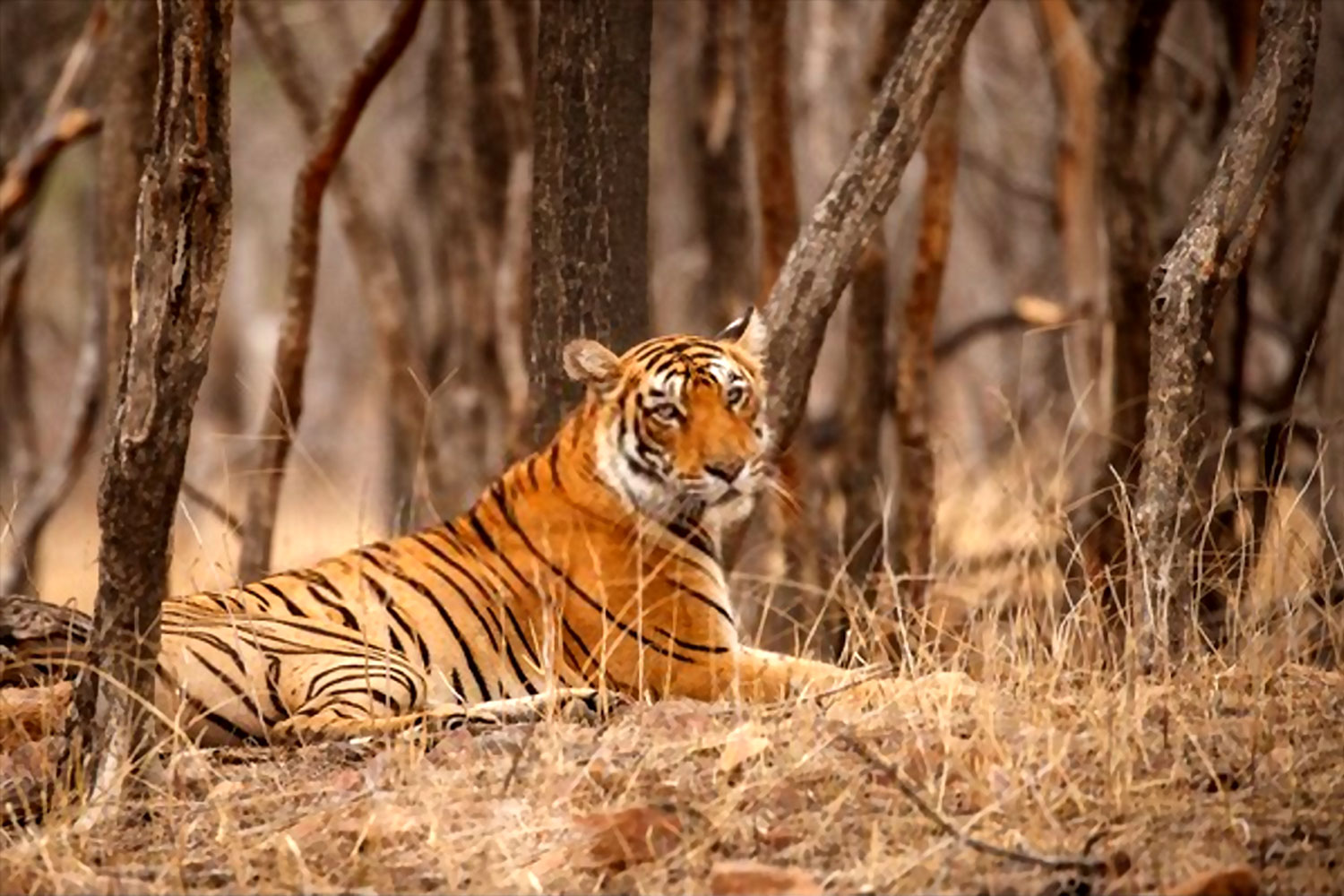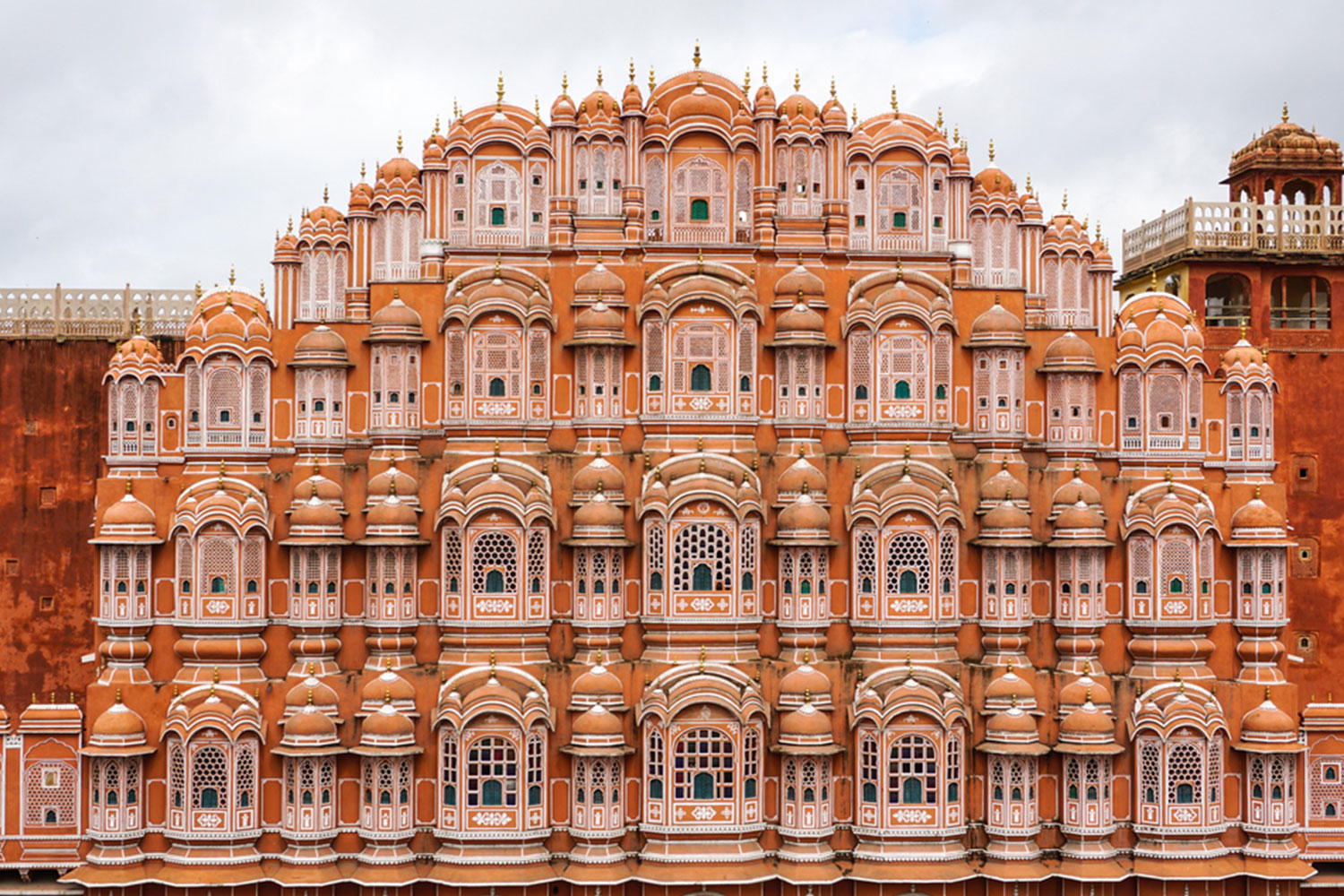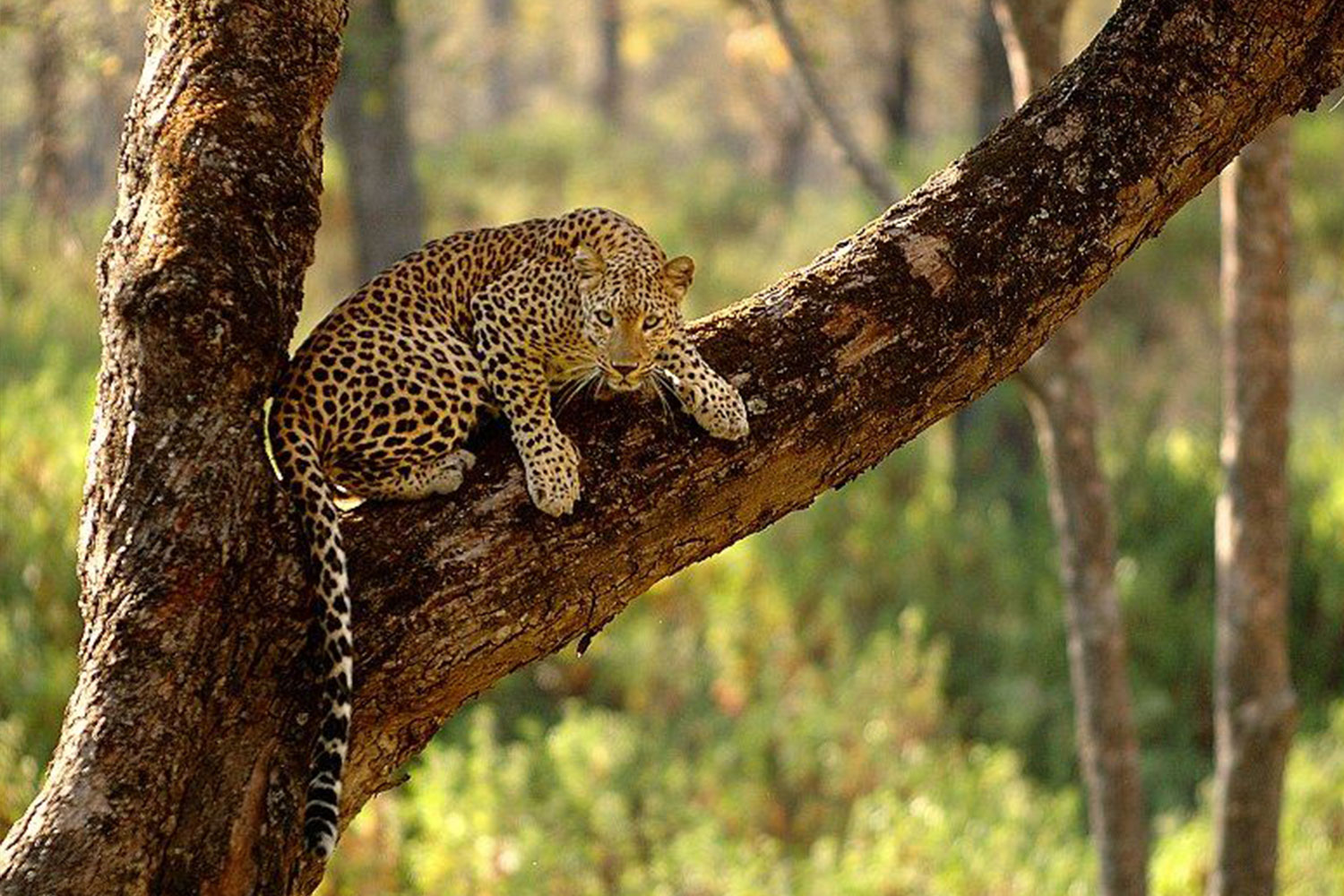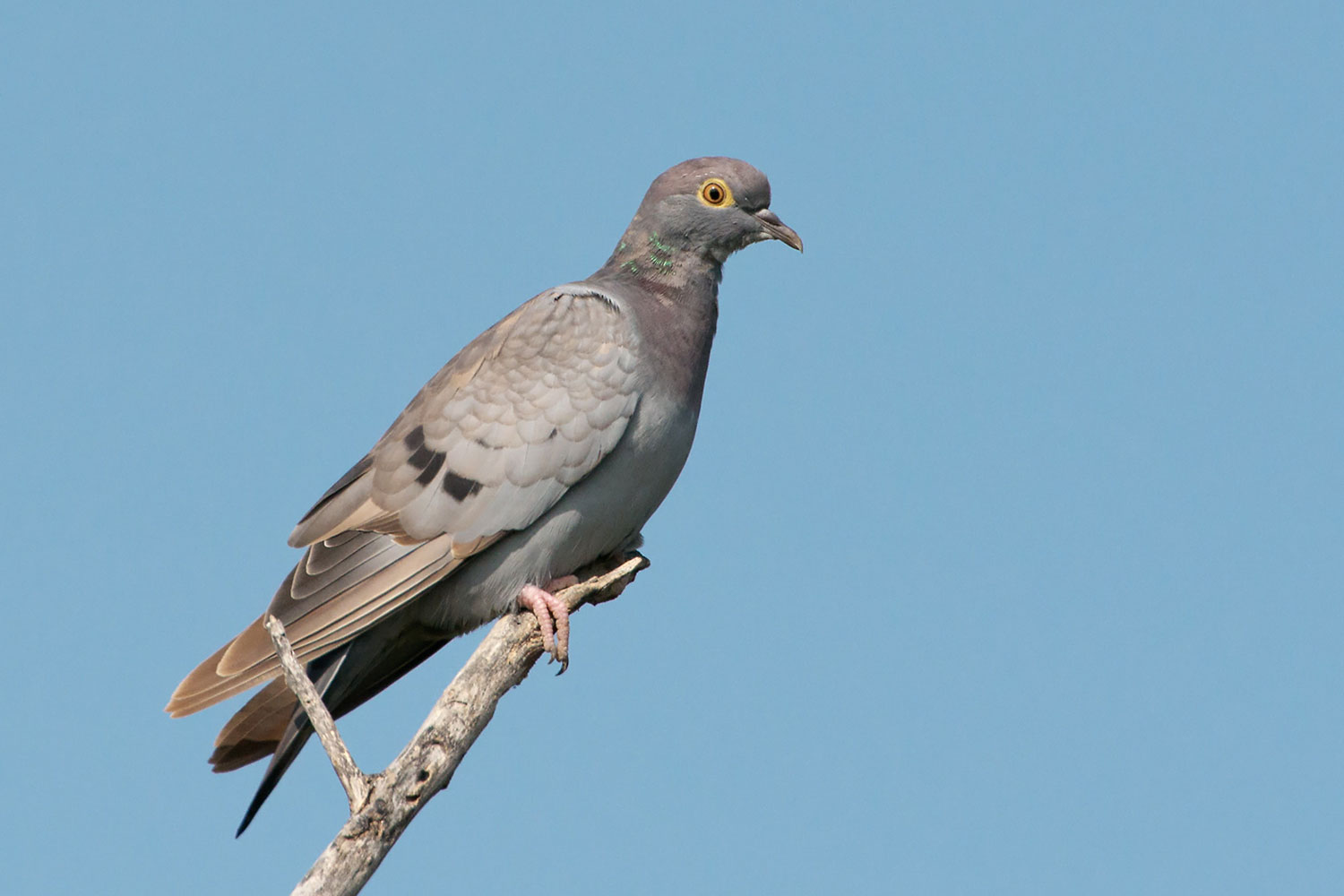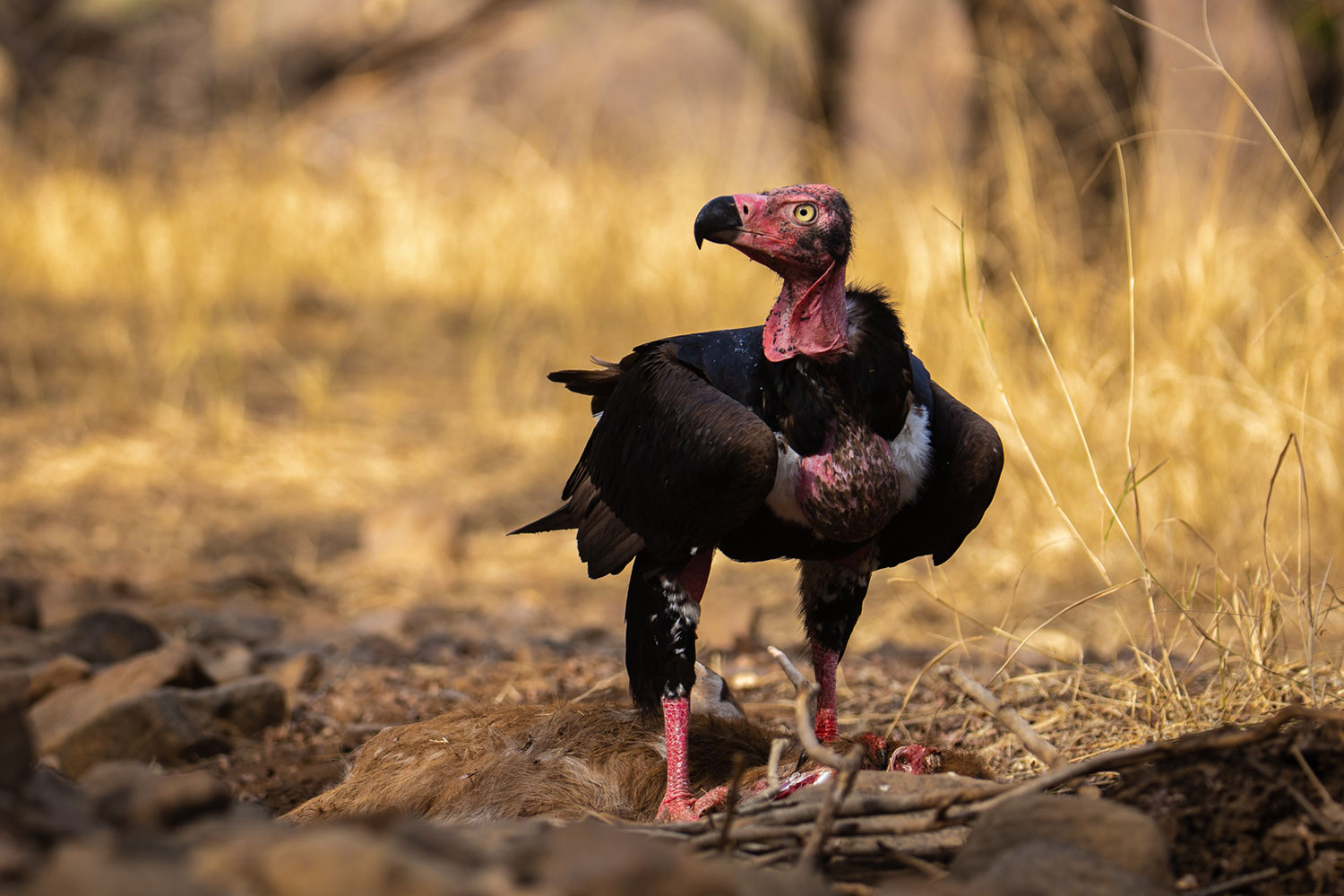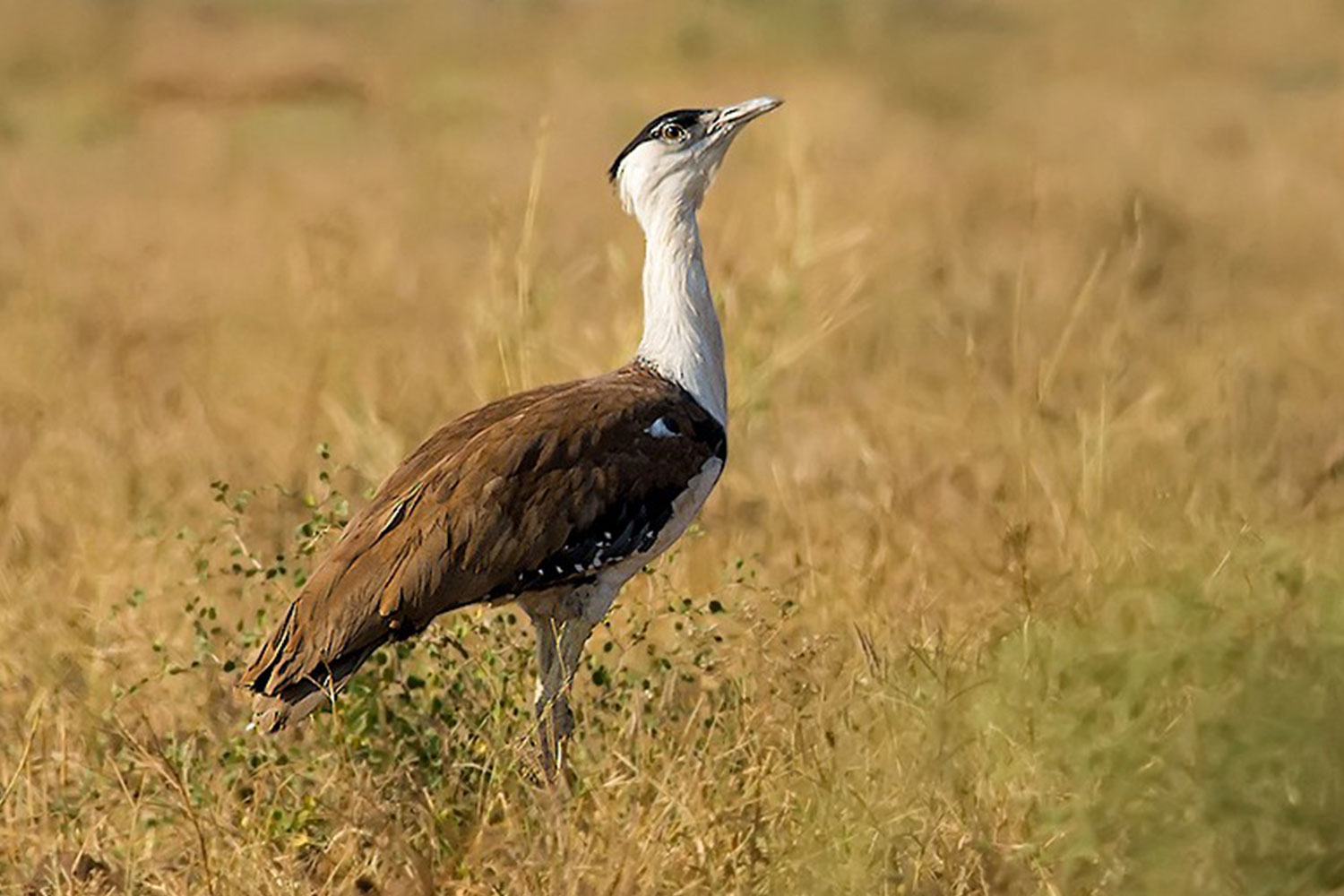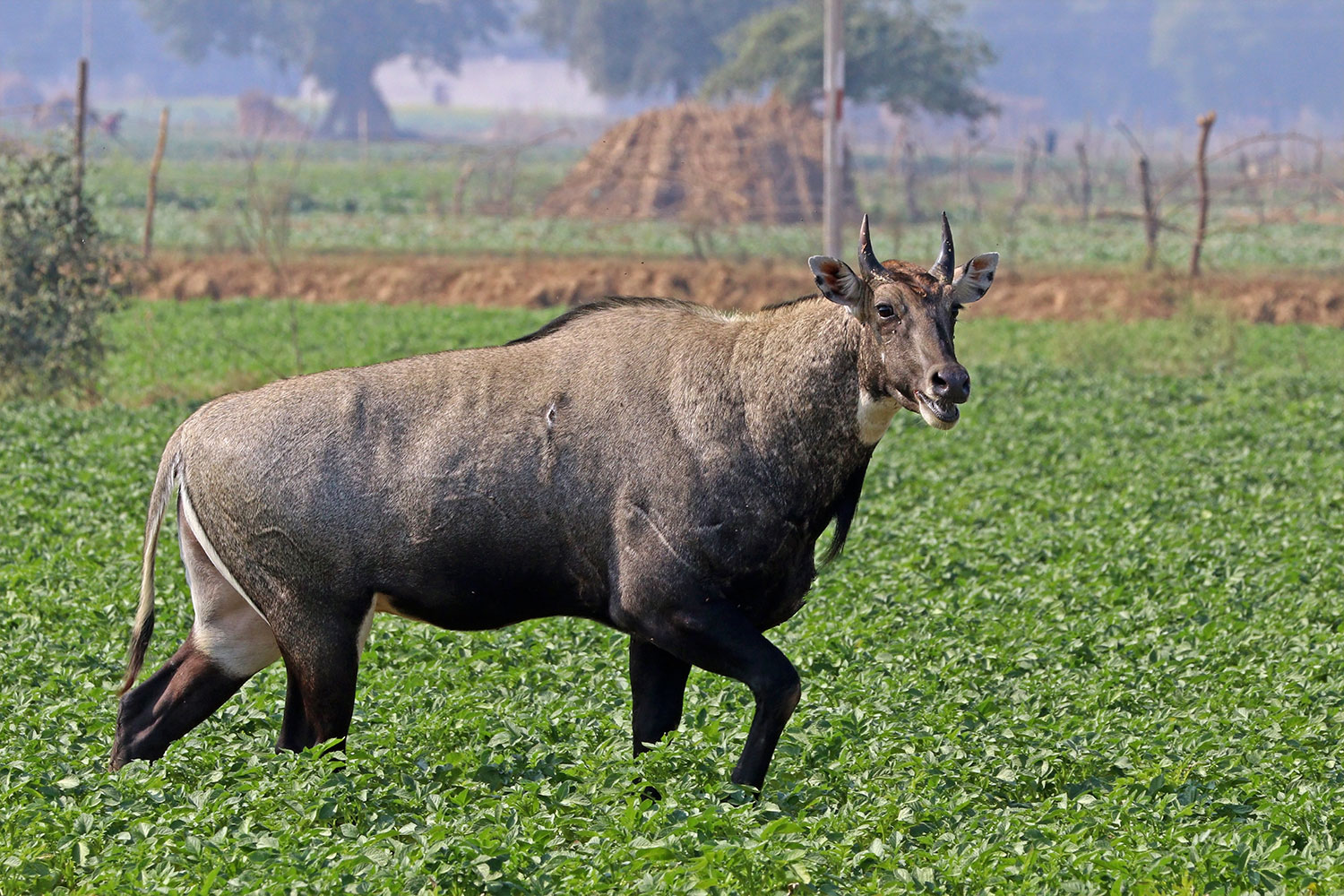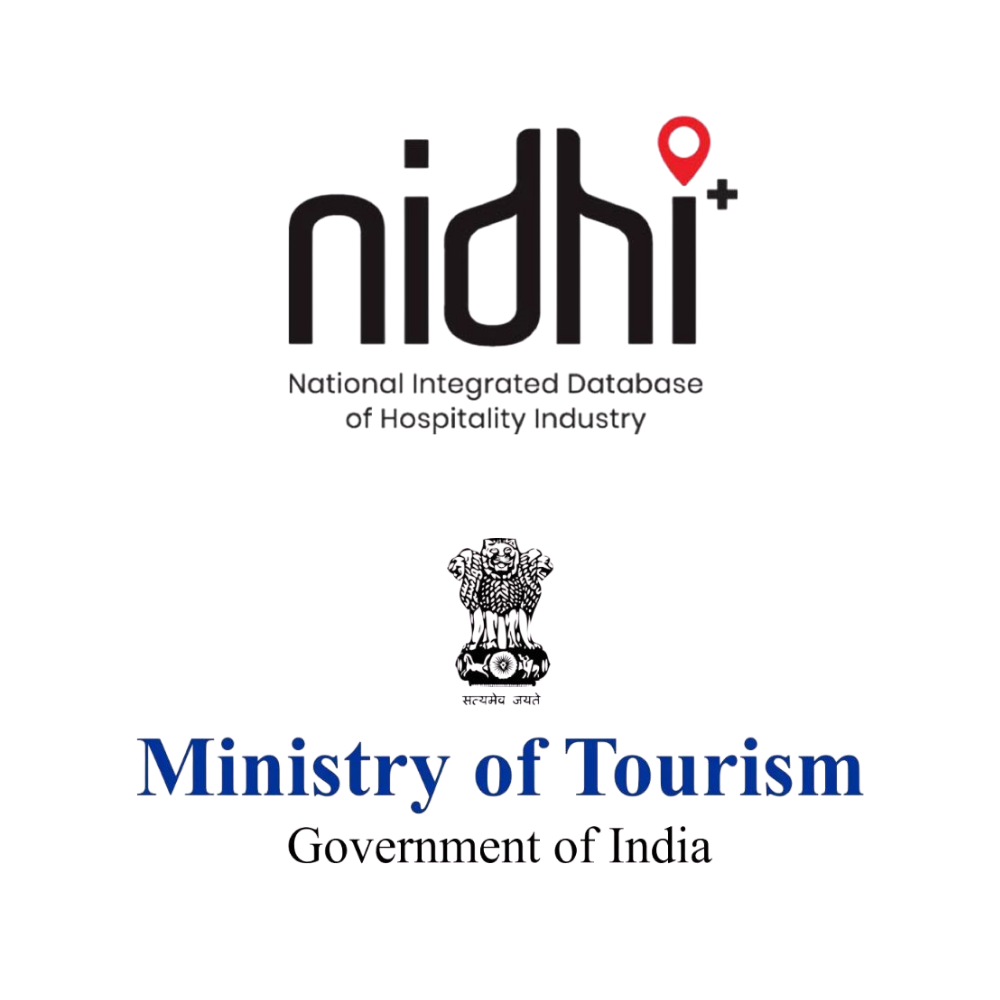Overview
The northwestern state of Rajasthan is rich in fascinating history and culture. The royal heritage is highly evident not only in the palaces, and monuments of the state but also in the wildlife. There is something regal about the animals and birds that call this state home. This tour gives you the opportunity to explore some of the best birdwatching destinations in Rajasthan.
Your tour starts in Delhi, a center of civilization for millennia, and now the capital of India. Apart from many historical monuments and heritage buildings, there are also many birding destinations close to the capital region.
From Delhi, we carry on to Bharatpur, home to Keoladeo National Park, also known as Bharatpur Bird Sanctuary. One of the smallest national parks in the country, Keoladeo National Park has a variety of habitats and is the winter home of over 350 species of birds.
Our next destination on this tour is Ranthambore National Park, arguably one of the best wildlife reserves in North India to spot a tiger. In fact, Ranthambhore is credited to be home to the world’s most photographed wild tigers. It is also home to Leopard, Jungle Cat, Golden Jackal, Sambar, Spotted Deer, Nilgai, Sloth Bear, Marsh Crocodile, and a variety of migratory waterfowl. The Ranthambhore Fort forms a spectacular backdrop to these wild forests and their inhabitants. The picturesque lakes of Rajbagh, Padam, and Malik are the center of attraction for all the wildlife lovers visiting this forest.
From Ranthambore, we travel to the royal city of Jaipur. Home to monuments that speak to the royal past of the Maharajas, Jaipur is also home to Jhalana Leopard Reserve, a leopard-rich habitat located conveniently nearby the city. In Jodhpur, we will have the opportunity to visit a nearby Bishnoi village. The Bishnoi are well-known for their animal-loving nature, as dictated by their religious tenets, and their villages are a fascinating study of human-animal coexistence.
Our next destination is Tal Chapper. Once the hunting ground of the Maharaja of Bikaner, this small protected area has a large population of Blackbuck and Chinkara and a very impressive list of birds. These include Indian Eagle-Owl, Montagu’s and Pallid Harriers, White-eyed Buzzard, Laggar Falcon, large flocks of the declining Yellow-eyed Pigeon, Indian Spotted Creeper, Long-tailed, and Great Grey Shrikes, huge mixed flocks of Greater Short-toed and Bimaculated Larks, and Water and Buff-bellied Pipits.
After Tal Chapper, we have the chance to observe two amazing birding spectacles, in very contrasting locations! At the Jorbeer Vulture Conservation Reserve, you can enjoy close views of the largest congregations of raptors to be found in India. Hundreds of Himalayan, Griffon and Egyptian Vultures gather here, joined by equally large numbers of Steppe Eagle, Black-eared Kite, and smaller numbers of Tawny and Eastern Imperial Eagles, with the chance of something rarer such as White-tailed Eagle or Saker Falcon, both of which have wintered in recent years. It is also fascinating to see birds such as Hoopoes feeding amongst the carcasses.
Somewhat more pleasant surroundings await us in Kheechan, famous for its wintering flock of several thousand Demoiselle Cranes. For years the villagers have put out the grain, as much as 500 kg per day, for the cranes. Feeding times in the morning and evening provide an amazing sight and sound, and we will stay to enjoy the evening at close range. Afterward, we will drive to the fortified city of Jaisalmer, our base for the next three nights, arriving quite late as we will find it difficult to leave the crane spectacle.
West of Jaisalmer, close to the Indo-Pakistan border, lies the Desert National Park, our next destination on this tour. This is the last remaining stronghold of the Great Indian Bustard, now sadly reduced to a population of fewer than 200 birds and with a real risk of extinction during our lifetimes.
From Desert National Park and Jaisalmer, we will travel back to Delhi, and the Sultanpur National Park. One of the smaller national parks in the country, Sultanpur nonetheless offers a fantastic birding experience. The park consists mainly of wetland, with adjoining forest and grassland patches that will be the perfect way to round off your list and your visit.

Meals: on own
Accommodation: Hotel Shanti Palace
Arrive at Delhi airport. You will be met and transferred to the hotel. You have the evening free to rest or visit the local market. You may ask us for tours (optional) covering various monument sites, museums, bird watching habitats, tourist markets, food joints, theater, performance venue,s etc.
Overnight stay.

Meals: Breakfast and Dinner
Accommodation: Hotel Kadamb Kunj
After an early breakfast, we will check out and drive to Bharatpur (225km/4.5hrs), where we can spend time birdwatching outside the Keoladeo National Park.
Arrive in Bharatpur, enjoy some birding outside the park
Key species: Indian Peafowl, Grey Francolin, Greater Painted-snipe, Indian White-eye, White-breasted Waterhen

Meals: Breakfast and Dinner
Accommodation: Hotel Kadamb Kunj
We have a full day of birdwatching in Bharatpur today. Apart from a myriad of wetland and forest birds, Bharatpur also has an excellent variety of mammal species, such as Nilgai, Sambar and Spotted Deer, Wild Boar, and Golden Jackal.
Overnight stay
Key species: Sarus Crane, Dusky Eagle-Owl. Greater Spotted Eagle, Knob-billed Duck, Lesser Whistling Duck

Meals: Breakfast, Lunch and Dinner
Accommodation: Ranthambhore Heritage Haveli
Post breakfast, check out from the hotel and drive to Ranthambore National Park. Arrive at Ranthambore, enjoy an afternoon canter safari in the park.
Overnight stay at Ranthambhore Heritage Haveli.
Key species: Tiger, Leopard, Sloth Bear, Golden Jackal, Indian Scops Owl, Spotted Owlet, Red-headed Vulture, Rufous Treepie, Crested Bunting

Meals: Breakfast, Lunch and Dinner
Accommodation: Ranthambhore Heritage Haveli
Morning and afternoon canter safaris for tiger tracking, wildlife viewing and bird watching. You will also visit Dastkar, a women’s social enterprise and eco-tourism initiative.
Overnight stay.
Key species: Tiger, Leopard, Sloth Bear, Nilgai, Spotted Deer, Sambar, Indian Vulture, Egyptian Vulture, White-bellied Drongo, White-browed Fantail

Meals: Breakfast, Dinner
Accommodation: Umaid Mahal
After an early breakfast, we will check out from our hotel and travel to Jaipur (330km/6.5hrs). We will have the opportunity for an evening safari in Jhalana Leopard Reserve. Not only is Jhalana home to a dense population of leopards and deer, but is also an ideal birding destination, with species like Spotted Owlet, Indian Golden Oriole, Jungle Nightjar, Indian Paradise Flycatcher, and more calling it home.
Overnight stay.

Meals: Breakfast, Dinner
Accommodation: Forest Rest House
Enjoy a morning safari in Jhalana. At about 1100 hrs., we will check out and travel to Tal Chapper, from where we enter the desert habitats and concentrate on some of the real specialties of this tour.
Overnight stay.
Key species: Leopard, Spotted Deer, Sambar, Indian Peafowl, Red-wattled Lapwing, Crested Bunting, White-browed Fantail, Jungle Babbler

Meals: Breakfast, Lunch, and Dinner
Accommodation: Forest Rest House
We have the full day to explore the grassland sanctuary of Tal Chapper. The walking and motorable trails in Tal Chapper will yield an amazing diversity of arid-area birds.
Overnight stay.
Key species: Indian Spotted Creeper, Red-necked Falcon, Long-tailed Shrike, Great Grey Shrike, Bimaculated Lark, Greater Short-toed Lark

Meals: Breakfast and Dinner
Accommodation: Lal Garh Palace
We have another half day of birding in Tal Chapper to look for targets. Once the hunting ground of the Maharaja of Bikaner, this small protected area has a large population of Blackbuck and Chinkara, and a very impressive list of birds. These include Indian Eagle-Owl, Montagu’s and Pallid Harriers, White-eyed Buzzard, Laggar Falcon, large flocks of the declining Yellow-eyed Pigeon, Indian Spotted Creeper, Long-tailed and Great Grey Shrikes, huge mixed flocks of Greater Short-toed and Bimaculated Larks, and Water and Buff-bellied Pipits.
After half a day of birding we will drive to the city of Bikaner for an overnight stop.

Meals: Breakfast, Lunch and Dinner
Accommodation: Khurja Hotel
Today is a very special day, as we have the chance to observe two amazing birding spectacles, in very contrasting locations! After an early breakfast we leave for the Jorbeer Conservation Reserve, where you can enjoy close views of the largest congregations of raptors to be found in India. Hundreds of Himalayan, Griffon and Egyptian Vultures gather here, joined by equally large numbers of Steppe Eagle, Black Kite, and smaller numbers of Tawny and Eastern Imperial Eagles. It is also fascinating to see birds such as Eurasian Hoopoe feeding amongst the carcasses.
By 1100 hrs., we will leave for Kheechan, which is famous for its wintering flock of several thousand Demoiselle Cranes. For years the villagers have put out grain, as much as 500 kg per day, for the cranes. We will be able to spend the evening admiring and photographing this amazing spectacle.
Overnight stay.

Meals: Breakfast in Kheechan and Dinner in Camp
Accommodation: Paddav Luxury Camp
After a morning session of birdwatching and photography in Kheechan, we move on to the city of Jaisalmer, and Desert National Park, where we will have a full day of birdwatching in the Thar Desert. The region is a haven for migratory and resident birds of the desert. Many eagles, harriers, falcons, and vultures are spotted here, as well as the highly-endangered Great Indian Bustard.
Overnight stay

Meals: Breakfast, Lunch and Dinner
Accommodation: Paddav Luxury Camp
We have a full day of birding today to explore the very unique Desert National Park. This is one of the last remaining strongholds of the Great Indian Bustard, now sadly reduced to a population of less than 200 birds and with a real risk of extinction during our lifetimes.
Overnight stay

Meals: Breakfast, Lunch and Dinner
Accommodation: None
We have another half day of birding today in Desert National Park to look for more targets. Aside from the bustard, there are several specialities to find here, including many raptors, Spotted and Black-bellied Sandgrouse, Cream-coloured Courser, Black-crowned Sparrow-Lark, Desert Lark, Greater Hoopoe-Lark, the little-known White-browed Bush Chat, Red-tailed Wheatear, Plain Leaf Warbler, and Trumpeter Finch.
Later, transfer to Jaisalmer station to connect to the overnight train to Delhi.

Meals: Breakfast, Dinner
Accommodation: Hotel Shanti Palace
Arrive in Delhi in the morning, later visit Sultanpur National Park for a couple of hours of birding. A fantastic wetland habitat, Sultanpur is home to many migratory waterfowl and scrub forest birds. When combined with the nearby grassland patches, it is a very promising birding destination.
Overnight stay.
Key species: Sarus Crane, Red Collared Dove, Indian Courser, Isabelline Shrike, Sind Sparrow, White-browed Bush Chat, Black-breasted Weaver, Bengal Bush Lark

Meals: Breakfast
Accommodation: None
After breakfast, you will be transferred to Delhi airport for your onward flight.
Highlights
- Birds and Mammals
- Bird Watching
- Village Visits
- Jungle Safari
- Asiatic Lion Sighting
- Photography
- Local Cuisine
- Quaint Accommodation
Included
- Accommodation on twin / single sharing basis Meals as per the itinerary
- 02 Day birding in Bharatpur 03 Canter safaris in Ranthambore
- 02 Jeep Safaris in Jhalana Birdwatching in Tal Chapper, Bikaner, Kheechan and DNP
- Permits of DNP Local jeep hire in DNP (04 persons per jeep basis)
- Train ticket from Jaisalmer to Delhi Sultanpur visit
- All surface transfers in private vehicle Arrival and departure transfers in Delhi | All taxes
Video
Location
Stories
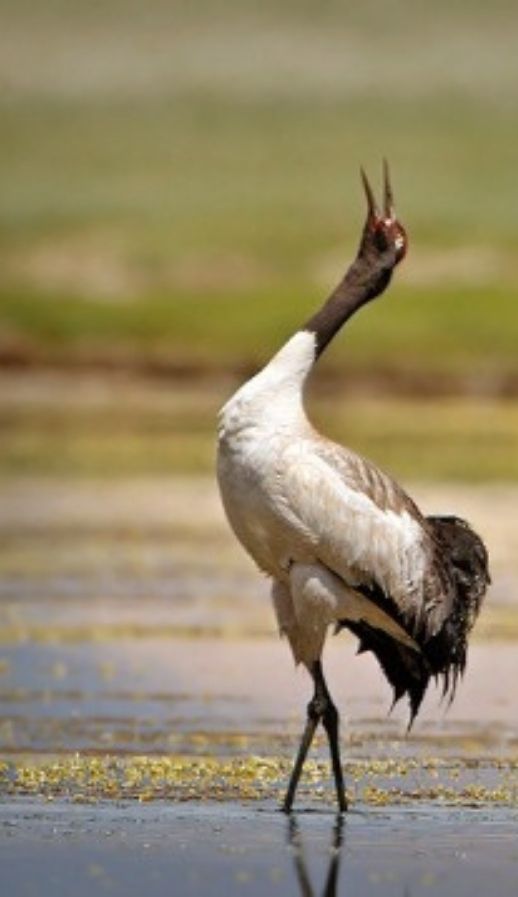
Ladakh
North India, the land of Ladakh, looks as though it was made for birdwatching and photography.

Gir National Park Gujarat
Sometimes it is not just the species spotted but also the amazing moments. Some of our guests had the unique opportunity to witness the mating of Asiatic Lions in the Gir Forest, truly a special moment.

Delhi
Surajpur is an amazing wetland close to the nation’s capital. Apart from being one of the monsoon homes for the Bristled Grassbird, it is also home to another sought-after species: the Bengal Bush Lark.

Rajasthan
One advantage of living near the birding hotspot of Bharatpur is that you can see some amazing birds, like the graceful Sarus Crane, in your backyard during this lockdown


